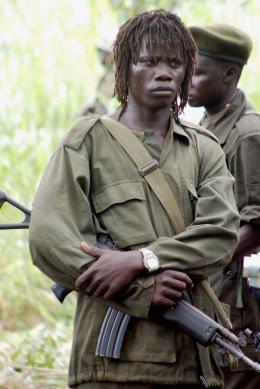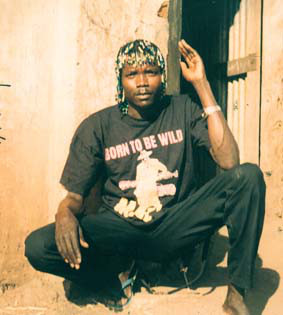For almost 30 years, the LRA has been terrorizing the Democratic Republic of Congo (DRC), the Central African Republic (CAR), South Sudan and Uganda. But how do community members, regional military, and humanitarian organizations distinguish LRA fighters from other rebels and bandits in the region?

How we recognize an LRA fighter
Uniform
As we mentioned earlier, the LRA was created in 1986 after Joseph Kony took over the Holy Spirit Movement (HSM) when Alice Lakwena was exiled. In addition to the spiritual aspect of the HSM, the LRA also incorporated members of another rebel group in northern Uganda at the time, the Uganda People’s Democratic Army (UPDA), which was more militaristic. The former members of the UPDA kept their uniforms when they started fighting for the LRA and some still wear them today, mixed with other stolen uniforms. These uniforms are easy to recognize as they are tattered from living in the bush for so many years.
Hair
In the past, dreadlocks were a common identifying feature of LRA fighters. When fighters entered the LRA, they began growing out their dreadlocks to represent the length of time they had remained in the bush. But, in recent years, LRA fighters have cut off their dreadlocks in order to avoid being recognized as easily.

Language
Because LRA fighters come from Acholiland in Northern Uganda, they communicate in the Acholi language and force their captives to learn Acholi. The rebel group also uses a mixture of Zande and Lingala, languages spoken in parts of the DR Congo and the CAR, to converse with people outside the LRA.
What characterizes an LRA attack
LRA attacks have been characterized over the years by the abduction of children to fight within LRA ranks or to “marry” its combatants. Over the years, long-term abductions have shifted towards more short-term abductions, during which civilians are used to carry goods that have been looted from communities. LRA attacks may also involve the destruction of property, the death of civilians, and sexual or gender-based violence (such as rape).
More recently, LRA attacks have become less violent and more focused on looting food and supplies – in fact, since 2011, LRA-related killings have decreased by 92%. This is a testament to a shifting culture within the LRA; many fighters are now looking to simply survive until the opportunity to escape arises.
Think people should hear about this?